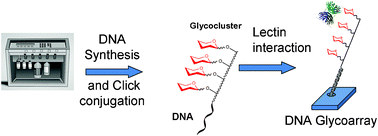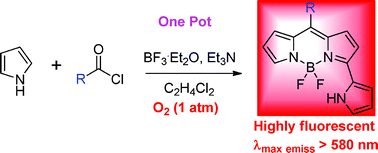This month sees the following articles in RSC Advances that are in the top ten most accessed:-
Graphene-inorganic nanocomposites
Song Bai and Xiaoping Shen
RSC Adv., 2012, 2, 64-98, DOI: 10.1039/C1RA00260K
Graphene quantum dots with controllable surface oxidation, tunable fluorescence and up-conversion emission
Shoujun Zhu, Junhu Zhang, Xue Liu, Bo Li, Xingfeng Wang, Shijia Tang, Qingnan Meng, Yunfeng Li, Ce Shi, Rui Hu and Bai Yang
RSC Adv., 2012,2, 2717-2720, DOI: 10.1039/C2RA20182H, Communication
Synthesis of graphene-based nanomaterials and their application in energy-related and environmental-related areas
Guixia Zhao, Tao Wen, Changlun Chen and Xiangke Wang
RSC Adv., 2012,2, 9286-9303, DOI: 10.1039/C2RA20990J, Review Article
Recent developments in solvent-free multicomponent reactions: a perfect synergy for eco-compatible organic synthesis
Maya Shankar Singh and Sushobhan Chowdhury
RSC Adv., 2012, Advance Article, DOI: 10.1039/C2RA01056A
Nitrogen-doped graphene with high nitrogen level via a one-step hydrothermal reaction of graphene oxide with urea for superior capacitive energy storage
Li Sun, Lei Wang, Chungui Tian, Taixing Tan, Ying Xie, Keying Shi, Meitong Li and Honggang Fu
RSC Adv., 2012,2, 4498-4506, DOI: 10.1039/C2RA01367C, Paper
Graphene oxide and its reduction: modeling and experimental progress
Shun Mao, Haihui Pu and Junhong Chen
RSC Adv., 2012, 2, 2643-2662, DOI: 10.1039/C2RA00663D
Organocatalytic Mannich/cyclization/aromatization sequence: direct synthesis of substituted pyrrole-3-carboxaldehydes
Indresh Kumar, Nisar A. Mir, Panduga Ramaraju and Basant P. Wakhloo
RSC Adv., 2012,2, 8922-8925, DOI: 10.1039/C2RA21258G, Communication
3D anatase TiO2 hollow microspheres assembled with high-energy {001} facets for lithium-ion batteries
Yanlong Yu, Xiaoliang Wang, Hongyu Sun and Mashkoor Ahmad
RSC Adv., 2012,2, 7901-7905, DOI: 10.1039/C2RA20718D, Paper
A facile room-temperature route to flower-like CuO microspheres with greatly enhanced lithium storage capability
Zhengqiu Yuan, Yan Wang and Yitai Qian
RSC Adv., 2012,2, 8602-8605, DOI: 10.1039/C2RA21267F, Communication
Cucurbituril chemistry: a tale of supramolecular success
Eric Masson, Xiaoxi Ling, Roymon Joseph, Lawrence Kyeremeh-Mensah and Xiaoyong Lu
RSC Adv., 2012,2, 1213-1247, DOI: 10.1039/C1RA00768H, Review Article
Why not take a look at the articles today and blog your thoughts and comments below.
Fancy submitting an article to RSC Advances? Then why not submit to us today or alternatively email us with your suggestions.
Comments Off on Top ten most accessed articles in August
![The crystal structure of [Ir(DMP)3] The crystal structure of [Ir(DMP)3]](https://blogs.rsc.org/ra/files/2012/11/c2ra21951d-f31-905x1023.jpg) Organic light emitting diodes (OLEDs) are highly promising as energy-efficient lighting and in flat panel displays. Much work is being done around the world and a recently accepted article in RSC Advances, by Yuezhong Meng, Shuanjin Wang and colleagues in China, reports on the preparation of a yellow-emitting iridium complex [Ir(DMP)3] for use in OLEDs.
Organic light emitting diodes (OLEDs) are highly promising as energy-efficient lighting and in flat panel displays. Much work is being done around the world and a recently accepted article in RSC Advances, by Yuezhong Meng, Shuanjin Wang and colleagues in China, reports on the preparation of a yellow-emitting iridium complex [Ir(DMP)3] for use in OLEDs.
















 The first
The first